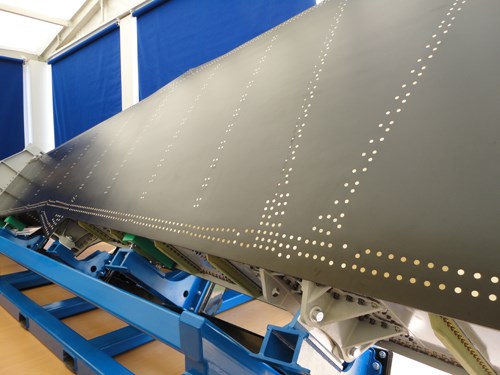
United Aircraft Corporation (UAC), a subsidiary of Rostec carried out static testing of the wing box of the MS-21 aircraft, made of Russian polymer composite materials.
To confirm the strength of the product, it was subjected to breaking loads, significantly exceeding those that are possible in real flight.
Aviation safety standards require that the caisson withstand the so-called design load during static tests. It, in turn, is one and a half times more than the maximum possible load during operation. At the TsAGI stand, the caisson collapsed under a load exceeding the calculated one. The test was carried out in specially created climatic conditions. To take into account the effect of temperature on the strength characteristics of the composite material, a part of the aircraft wing structure was subjected to heating.
The caisson was manufactured by JSC AeroComposite, a subsidiary of PJSC Irkut Corporation, which is part of the United Aircraft Corporation.
“The development of civil aviation requires harmonious cooperation between science and industry. We have created an advanced experimental base at TsAGI, which is operated by a highly professional team. This allows us to conduct a huge amount of testing within the framework of the MS-21 innovation program together with specialists from the Irkut Corporation,” said Kirill Sypalo, Director General of FAU TsAGI, Corresponding Member of the Russian Academy of Sciences.
Russian materials for load-bearing composite wing structures were developed with the participation of scientists from Moscow State University and Rosatom, as well as aviation industry specialists. The MS-21-300 aircraft, the wing of which is made of Russian materials, took to the skies on December 25, 2021. The first flight was preceded by a large complex of ground tests, which showed the compliance of domestic composites with the requirements for the aircraft design.
